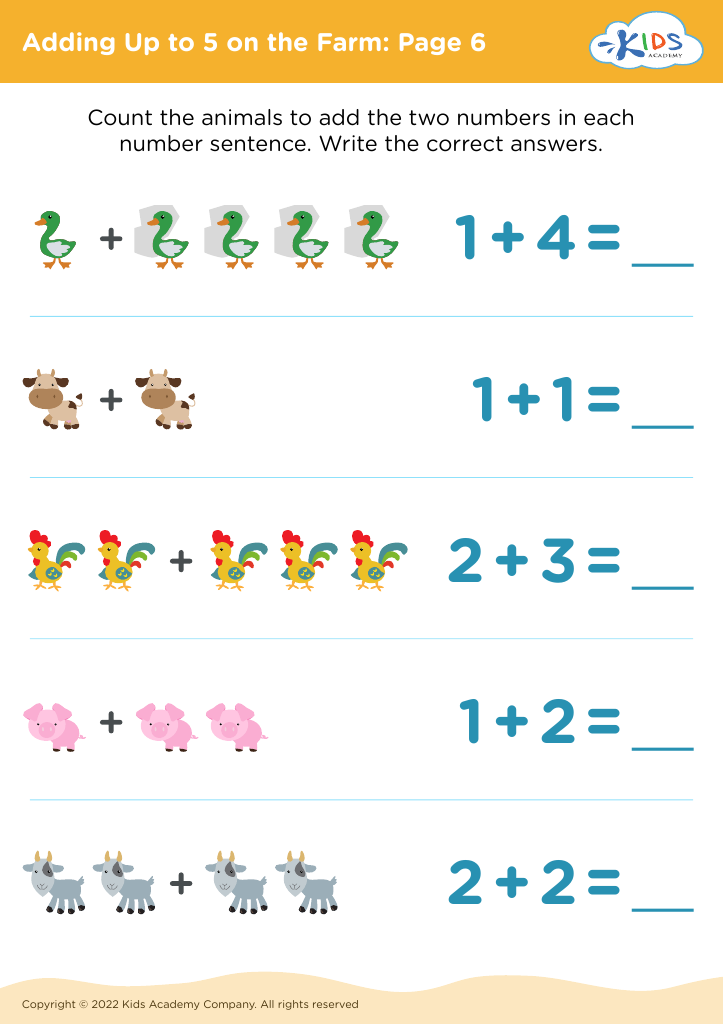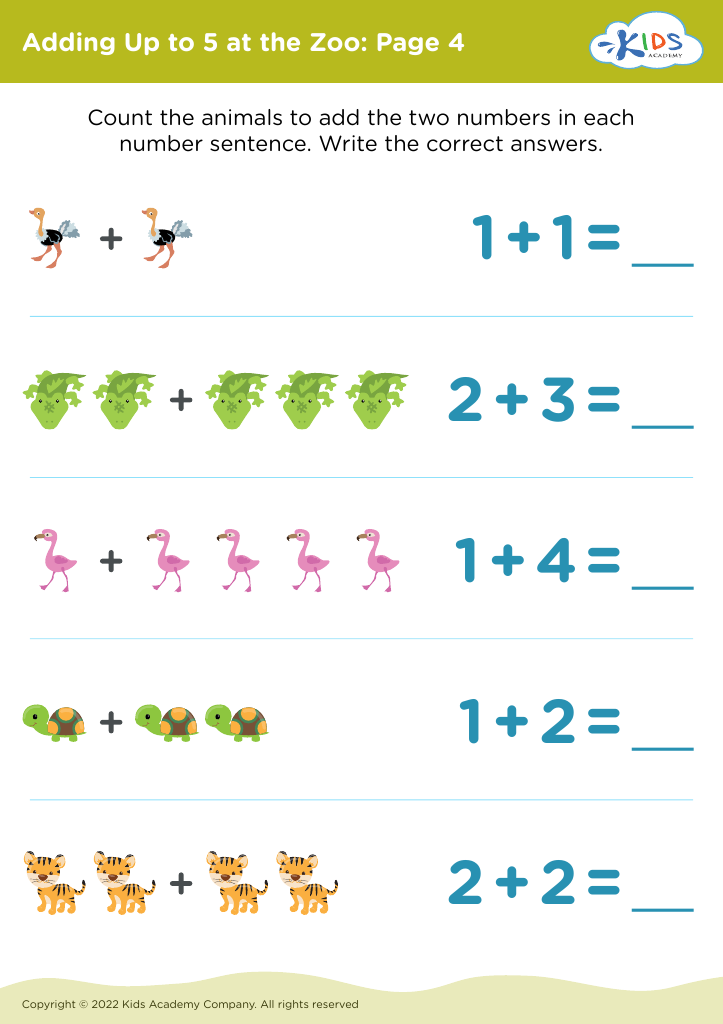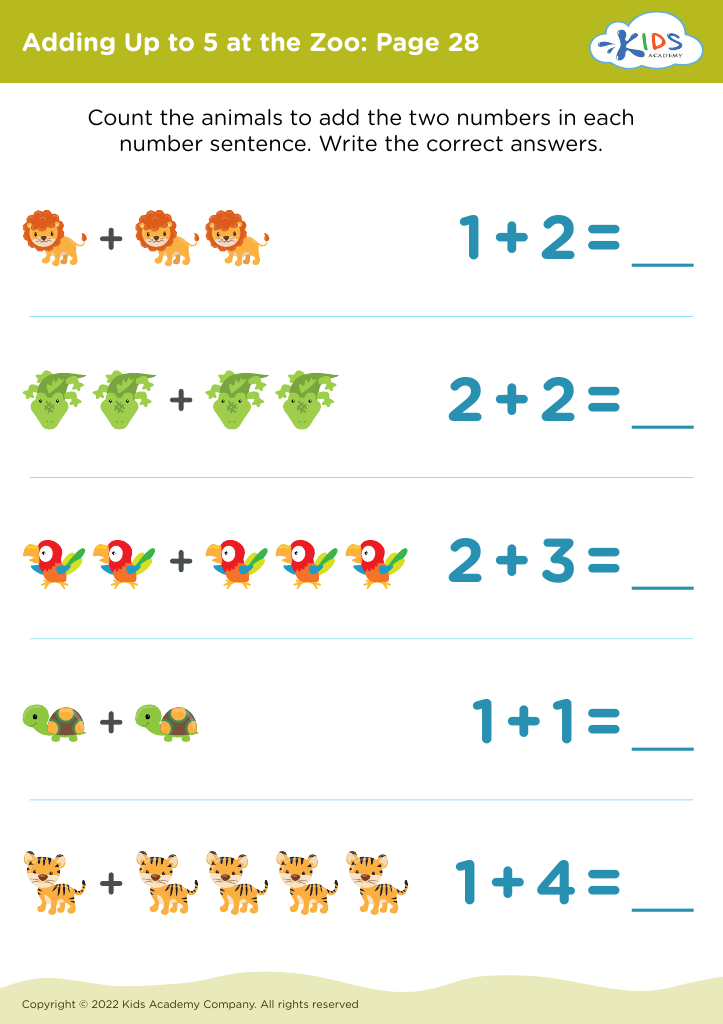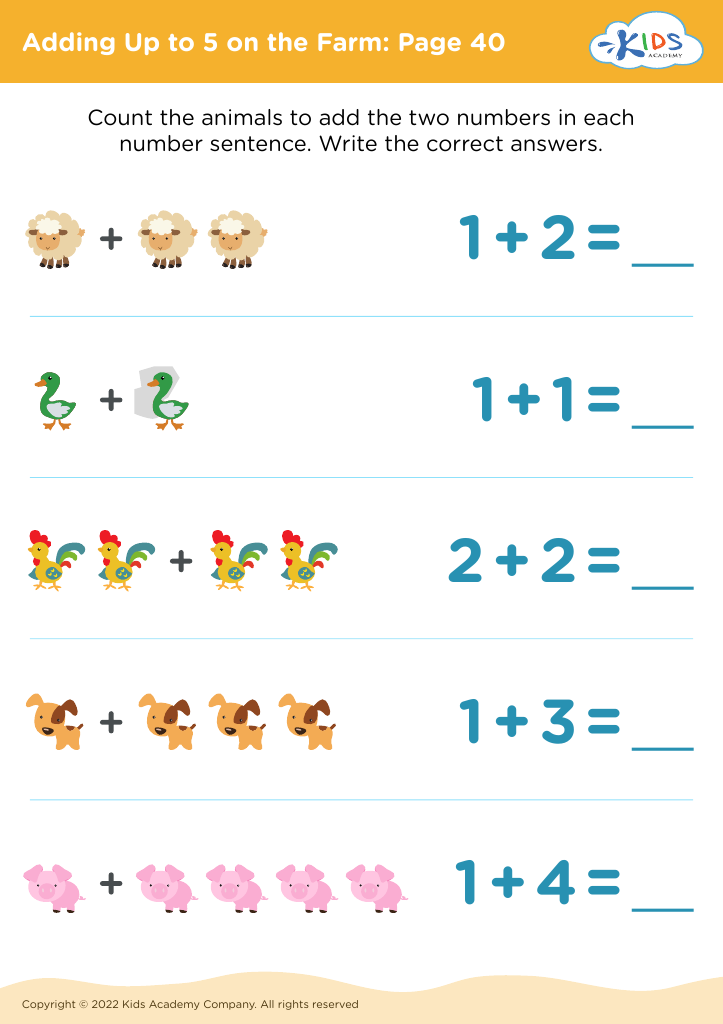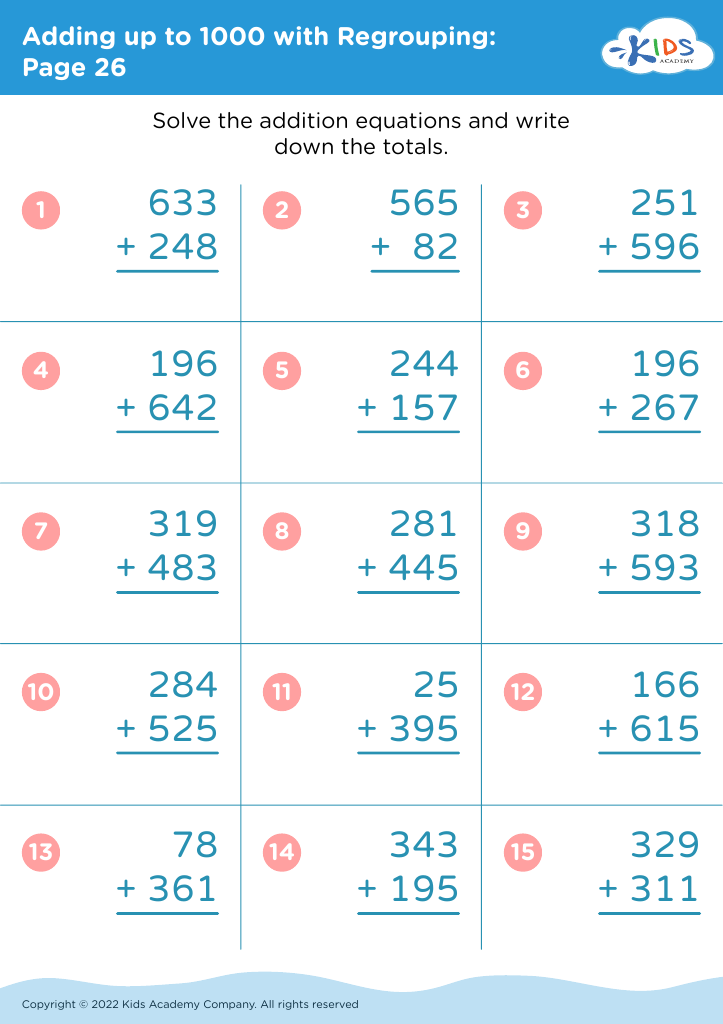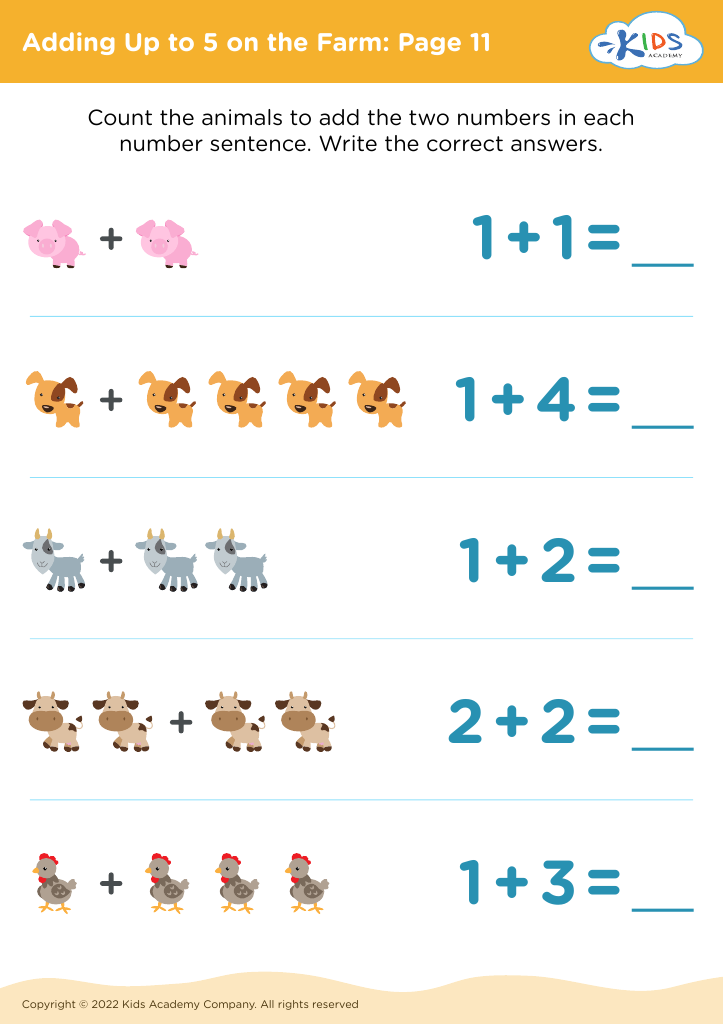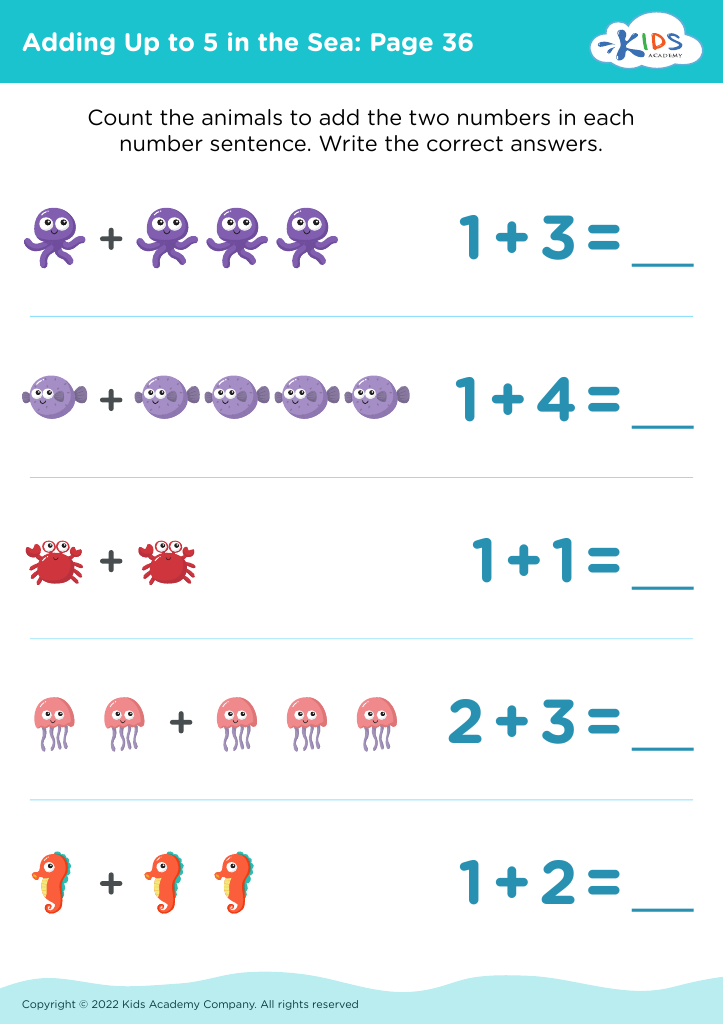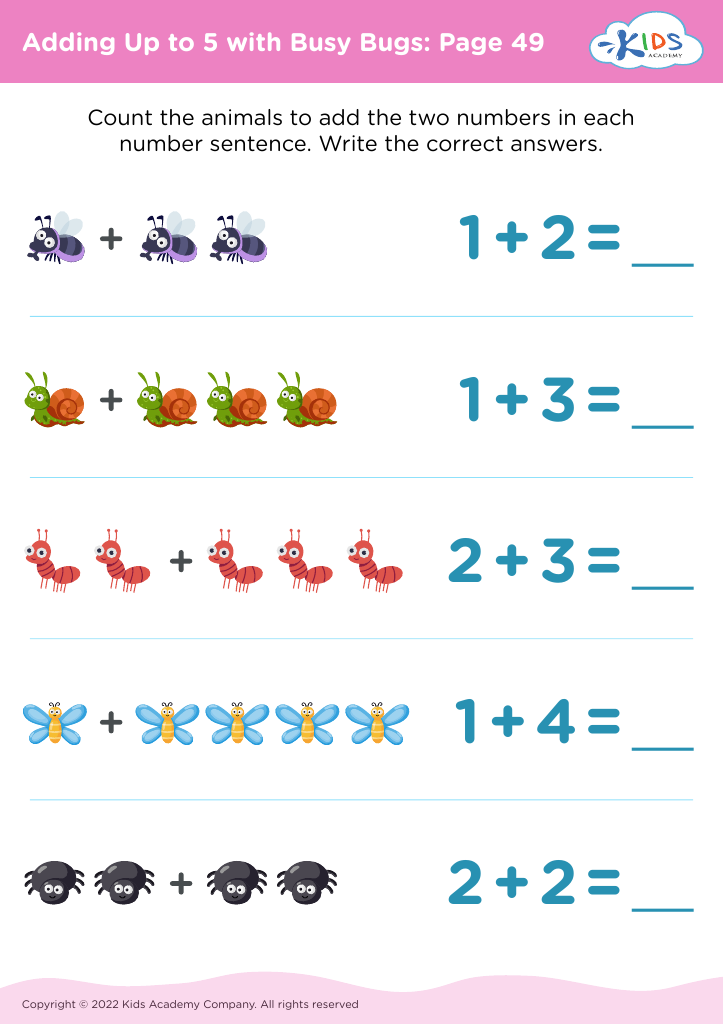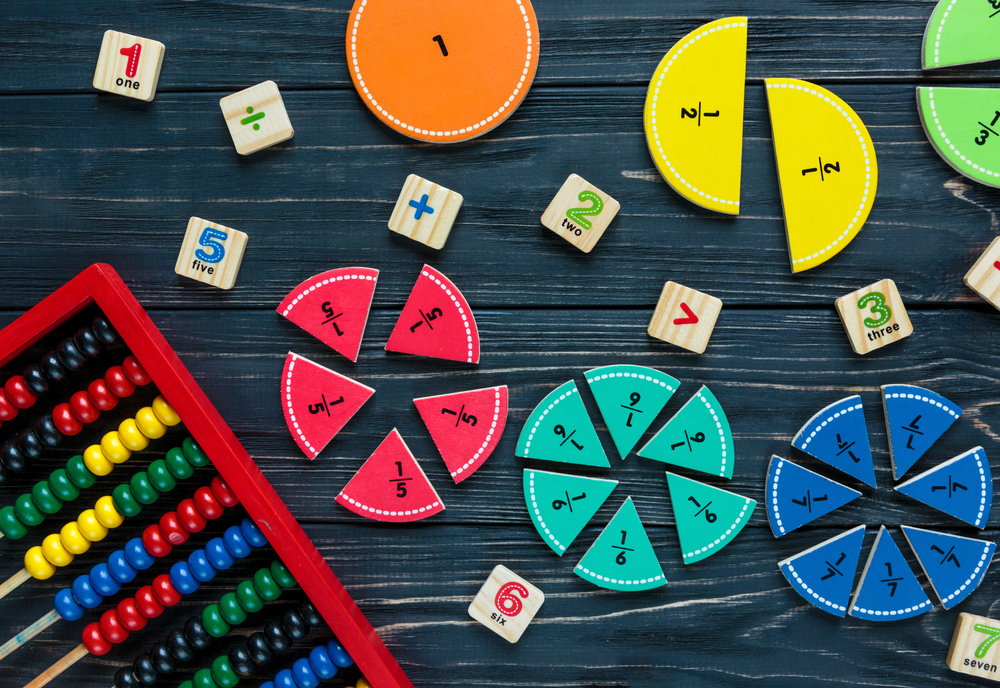Visual Learning Math Worksheets for Ages 5-8
101 filtered results
-
From - To
Discover our engaging Visual Learning Math Worksheets designed specifically for children ages 5-8. Tailored to enhance understanding and retention, these worksheets utilize vibrant visuals and interactive exercises that make math concepts fun and accessible. From counting and addition to subtraction and simple problem-solving, each resource is crafted to cater to young learners' developmental needs. Encouraging visual thinking helps kids grasp mathematical ideas more easily, fostering their confidence and enthusiasm for learning. Perfect for home or classroom use, these worksheets are a fantastic way to support early math education in an enjoyable, child-centered manner. Explore our collection and inspire a love for math today!
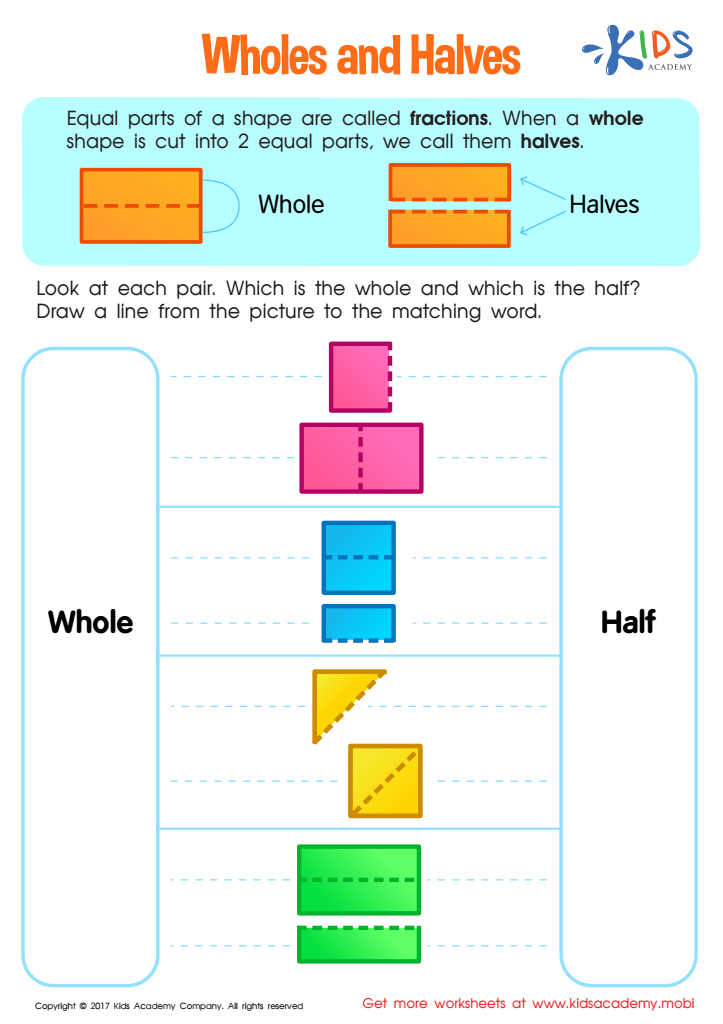

Wholes and Halves Worksheet
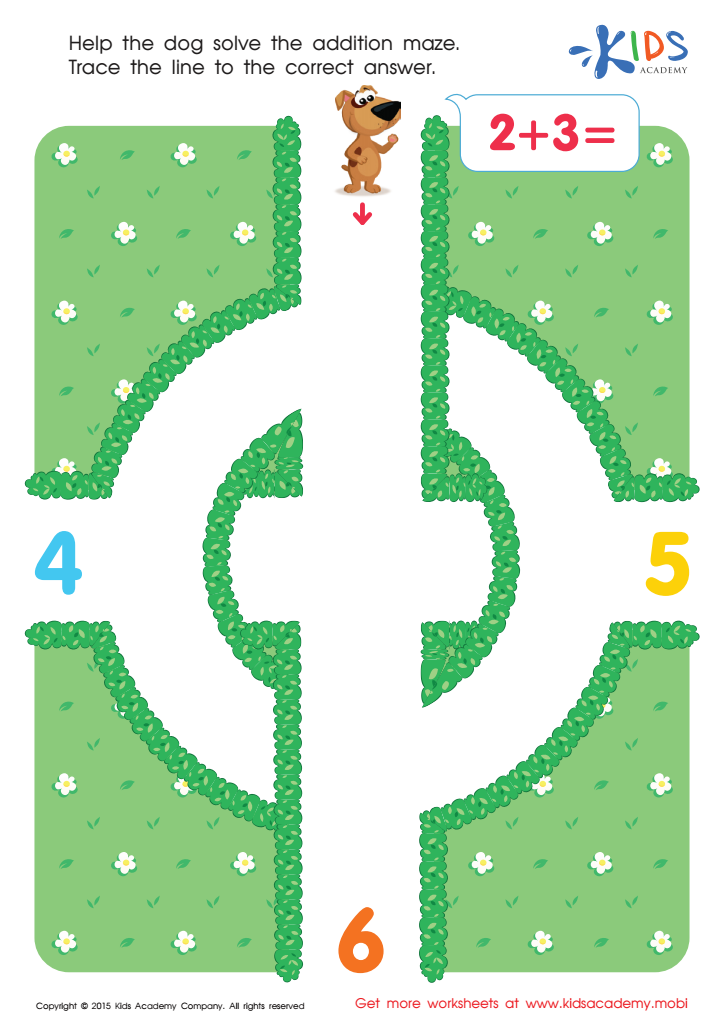

Two And Three Addition Worksheet
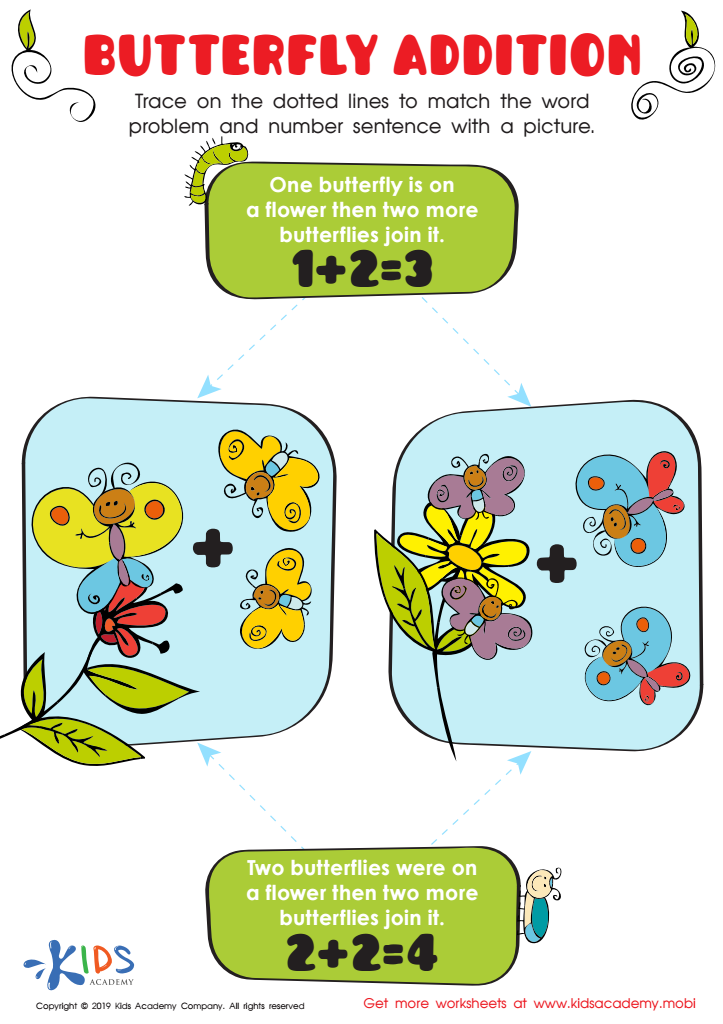

Butterfly Addition Worksheet


Subtracting Socks Worksheet
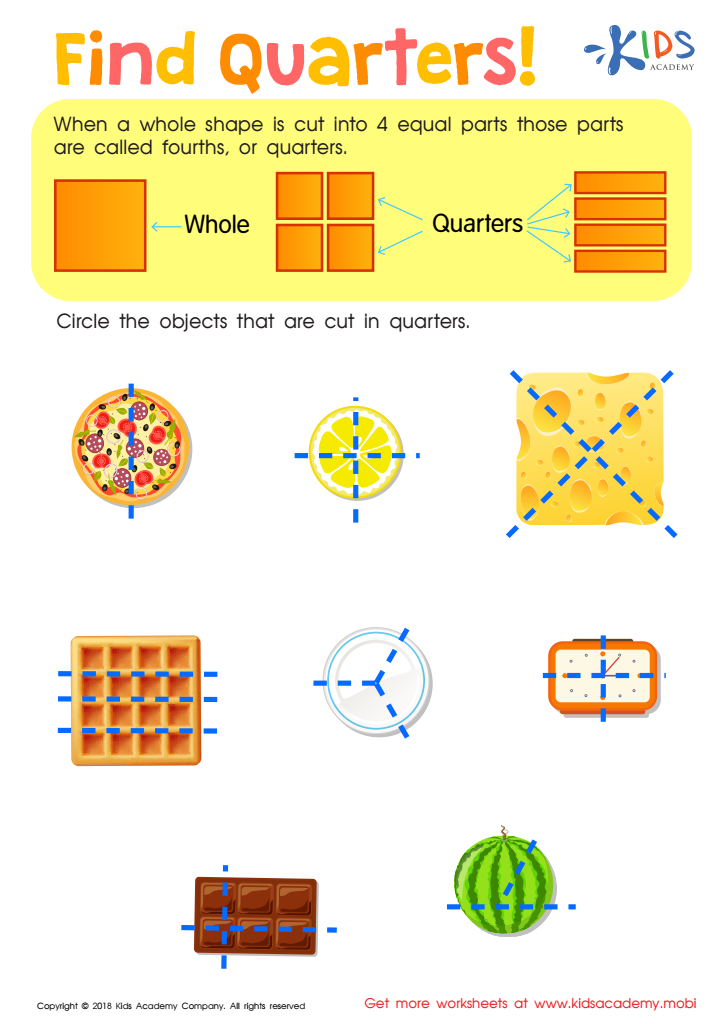

Find Quarters Worksheet


Hot Air Balloon Math Worksheet
Visual learning in math for ages 5 to 8 is crucial as it aligns with children's natural developmental stages, fostering deeper understanding and retention of mathematical concepts. Young learners are often concrete thinkers, and visual strategies, such as diagrams, pictorial representations, and manipulatives, can help make abstract concepts tangible. These methods allow children to visualize math problems, enhancing engagement and reducing anxiety around mathematics.
Moreover, visual learning caters to diverse learning styles. Some children grasp information better through images and symbols rather than traditional numerical approaches. By employing visual tools, educators can accommodate various learners, fostering an inclusive environment that supports everyone.
Parents and teachers should care because visual learning approaches encourage critical thinking and problem-solving skills. They equip children with strategies to break down complex problems, preparing them for future academic challenges. Strong foundational skills in mathematics are essential, as they not only build confidence but also promote a positive attitude toward learning.
In essence, adopting visual learning methods in early math education nurtures a child's mathematical literacy, preparing them for more advanced concepts and inspiring a lifelong love for learning. Investing in these methods means investing in each child's future success.
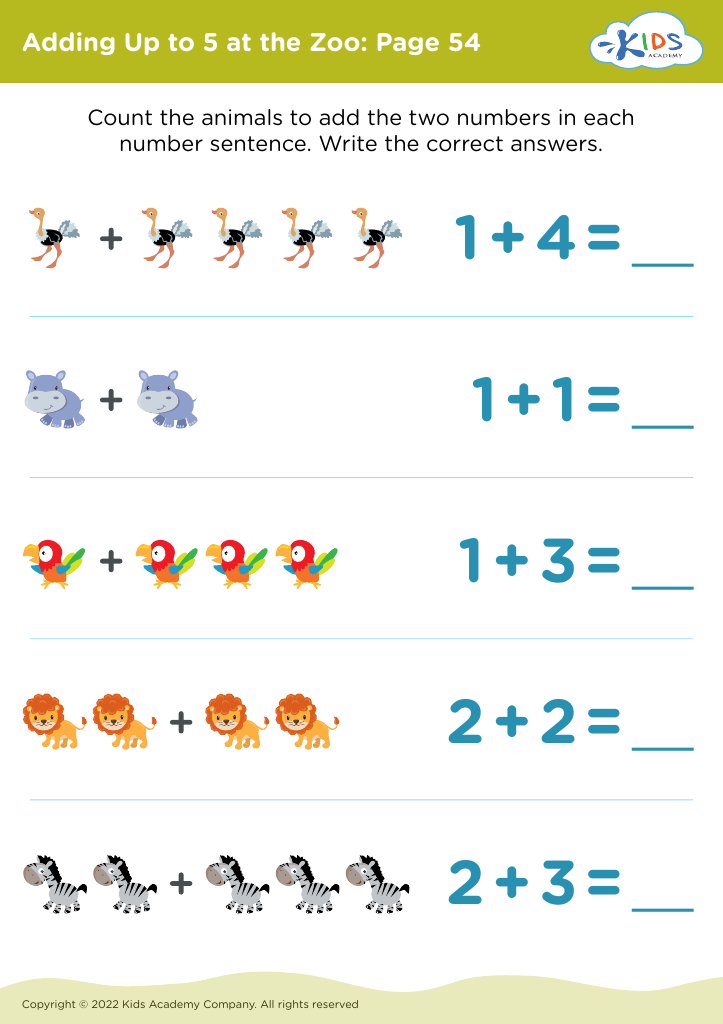


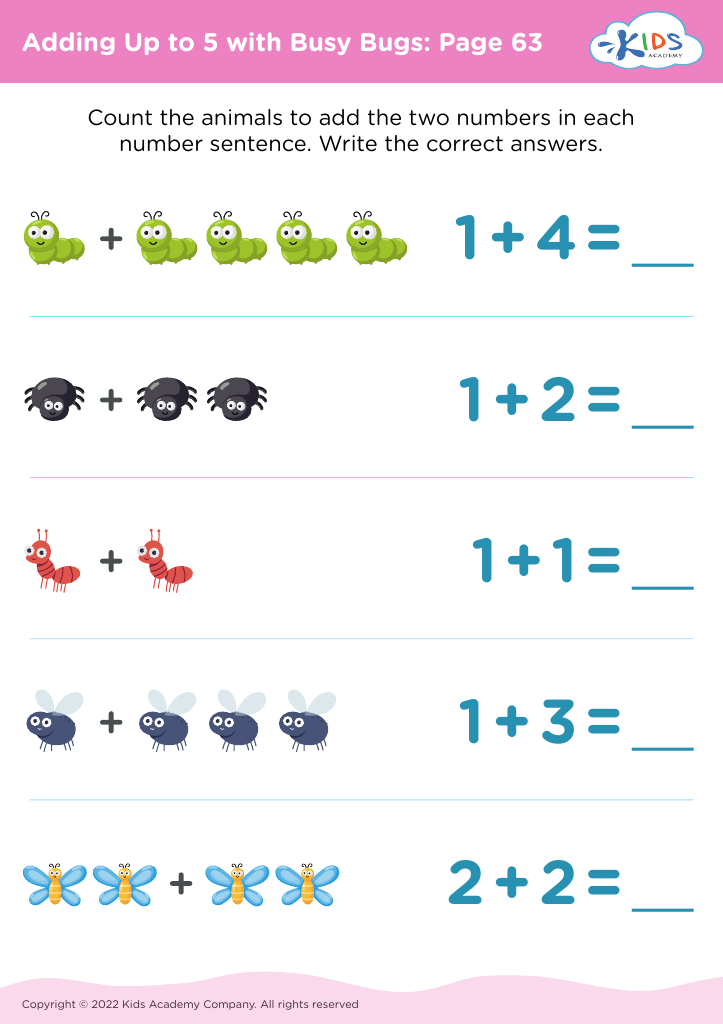
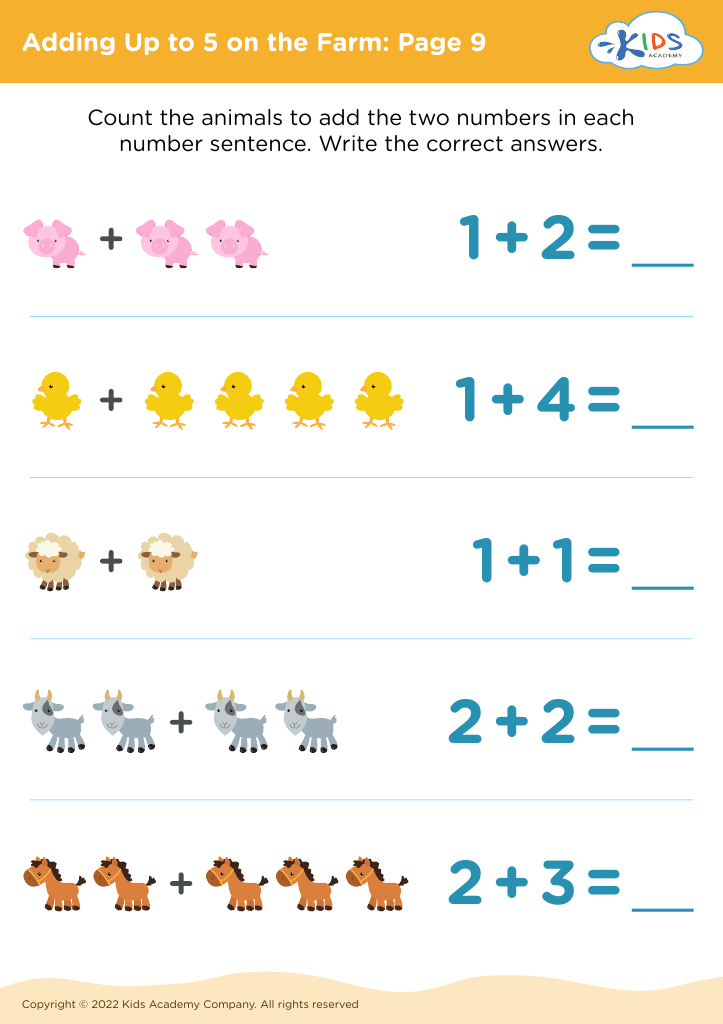
 Assign to My Students
Assign to My Students


